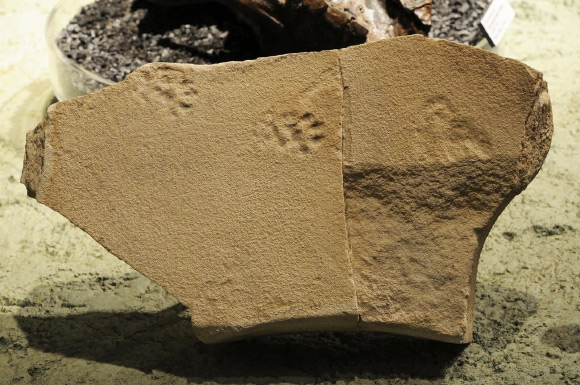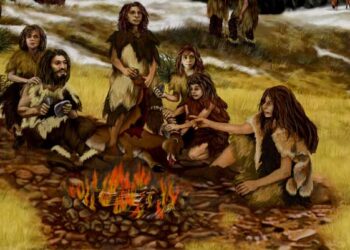Paleontologists have discovered 50- to 25-million-year-old fossilized footprints of invertebrates and vertebrates, including a false saber-toothed cat (nimravid), at John Day Fossil Beds National Monument in Oregon, the United States.

John Day Fossil Beds National Monument (JODA) in central and eastern Oregon is known for body fossils of ancient mammals.
According to the paleontologists, these specimens comprise a nearly continuous, 50 million-year record of mammalian evolution.
Four geological formations are recognized within JODA: Clarno (50-39 million years old), John Day (31-25 million years old), Mascall (16-12 million years old), and Rattlesnake (8-6 million years old).
The newly-discovered footprints are part of the Clarno and John Day formations.
“They reveal fascinating behaviors and species previously undocumented in the monument’s extensive fossil record,” the researchers said.
A set of pawprints found in a 29-million-year-old volcanic ash layer of the John Day Formation was likely made by to a nimravid, a saber-toothed, bobcat-sized predator such as Hoplophoneus.
The lack of claw marks supports evidence of retractable claws, similar to modern felines.
Three-toed, rounded hoofprints of the same age are believed to have been made by a large herbivore such as an ancient tapir or rhinoceros.
Two small bird tracks, beak marks and invertebrate trails were discovered in the Clarno Formation.
They suggest ancient shorebirds foraged for food in shallow water — behavior strikingly similar to that seen in modern species.
“This prehistoric behavior from 50 million years ago is still prevalent today in modern shorebirds,” said Conner Bennett, a paleontologist at Utah Tech University.
“It’s fascinating. That is an incredibly long time for a species to exhibit the same foraging patterns as its ancestors.”
In the same formation, the scientists found a rare fossil track featuring clawed, splayed toes.
It indicates a lizard once dashed along a…
Read the full article here

